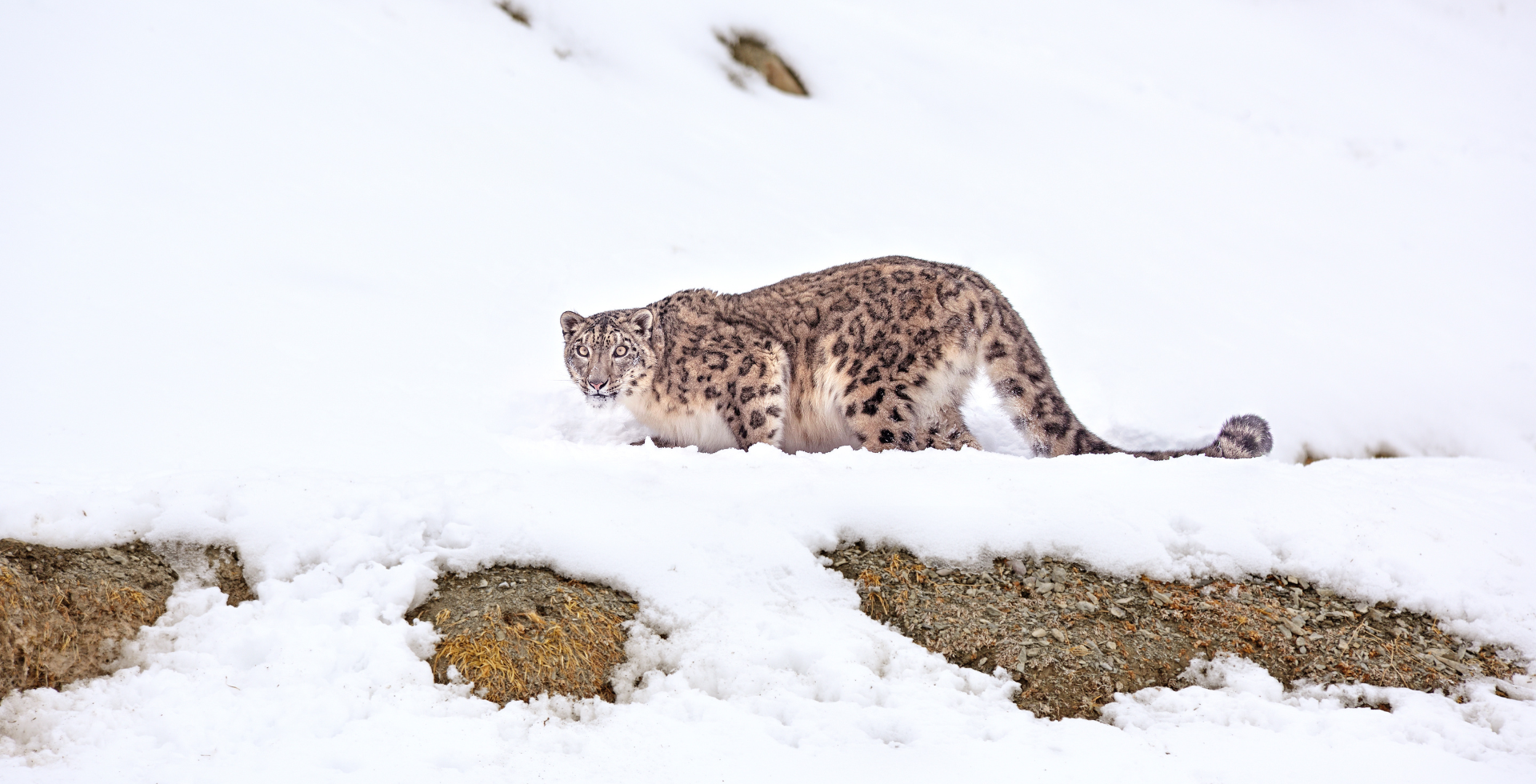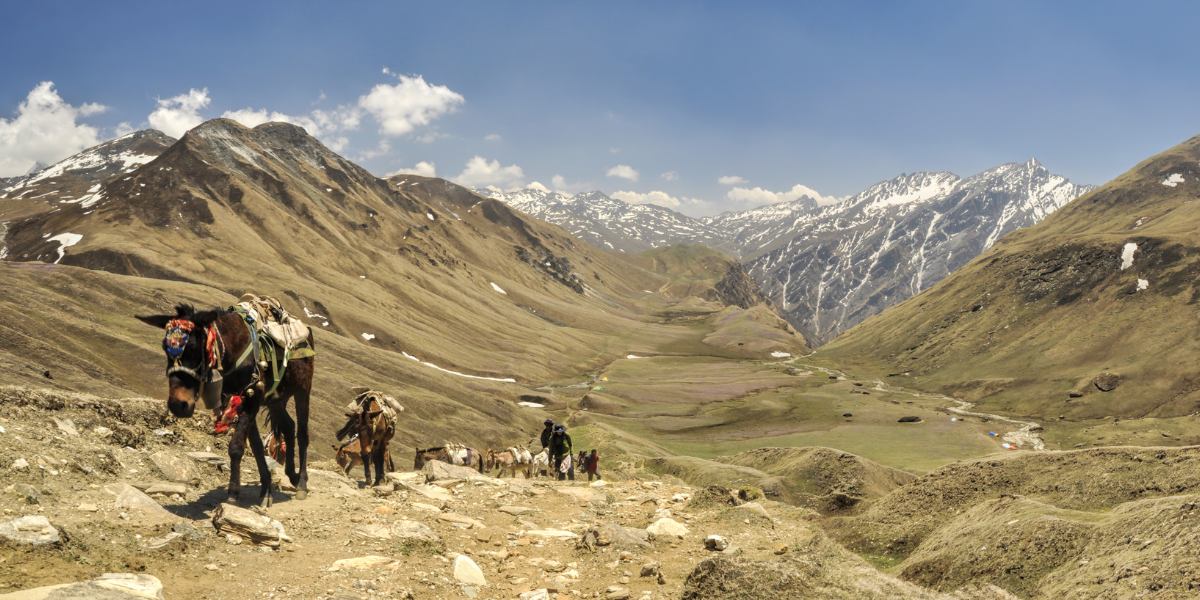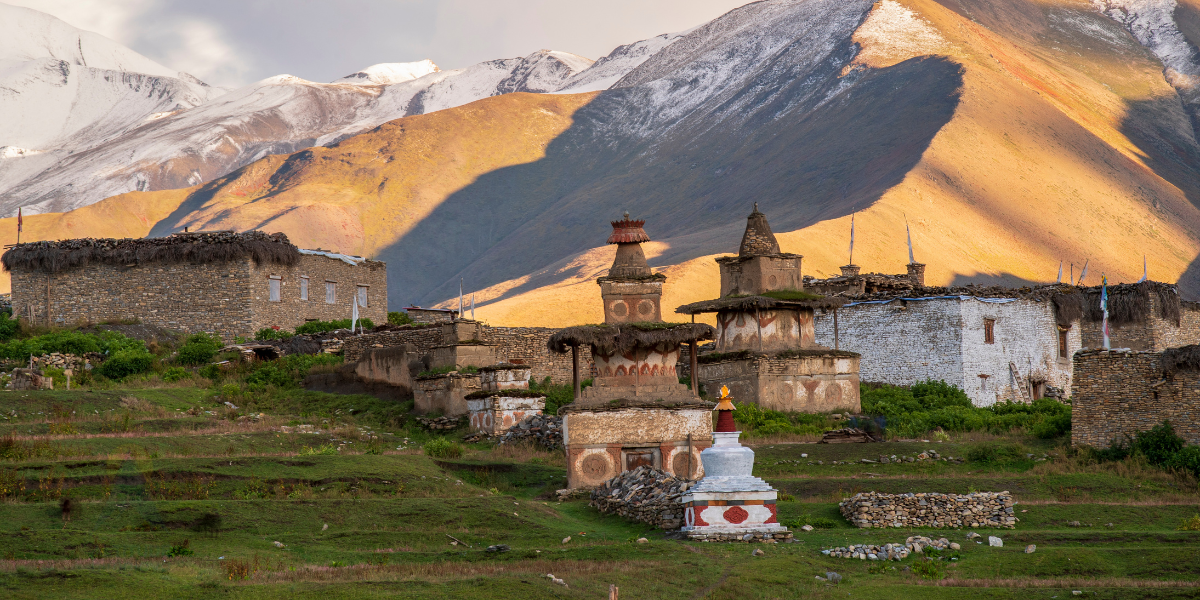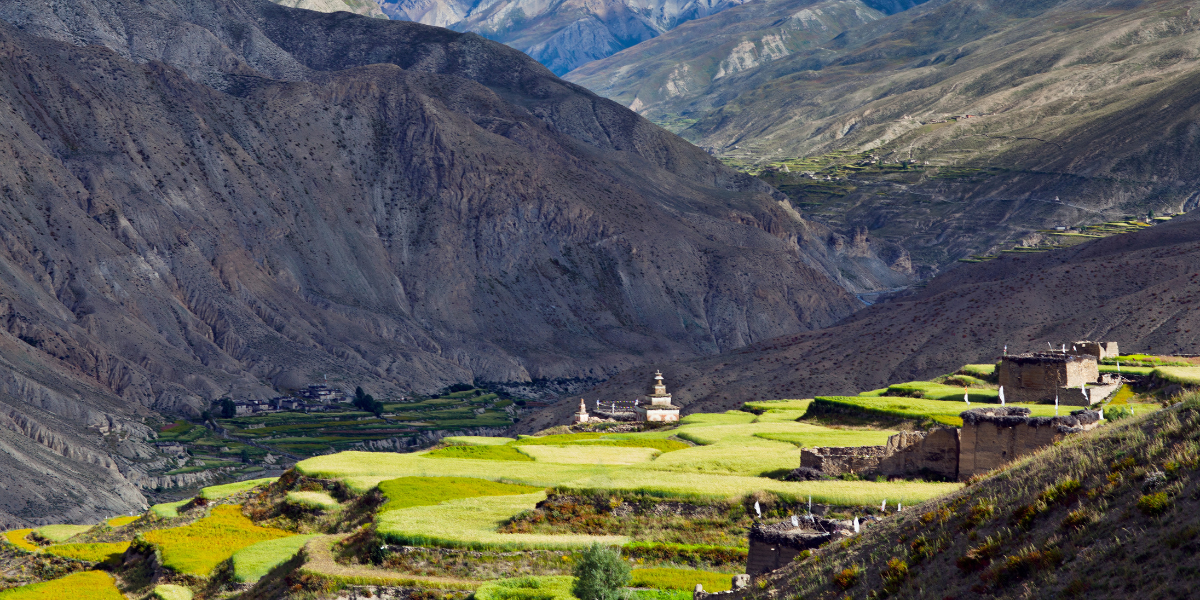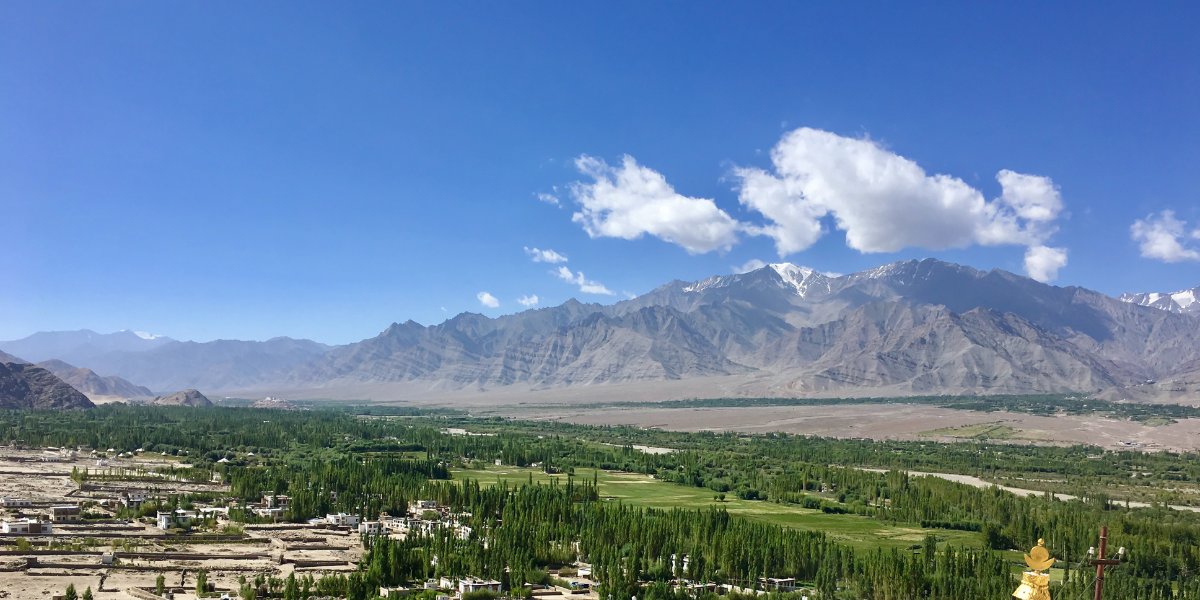Dolpo is a remote but mystical paradise tucked in the northwest part of Nepal. As remote as it is, the feeling of traveling back in time you get when you are in Dolpo makes it a must-visit place once in a lifetime. Dolpo is a naturally, culturally, and spiritually rich place that welcomes people from different walks of life. The otherworldly characteristic of Dolpo does come from it being in a relatively remote place, preserving its pristine natural beauty to this day. Still, there is another considerable factor that contributes to Dolpo’s mystical quality, which is the presence of pre-Buddhism, the Bon religion. Since Bon-po is such a broad topic, many people aren't even aware of what it is. Whether you're searching for an unspoiled environment or wish to learn more about the historic culture of this area, Dolpo has plenty to offer you.
“Bon-po is Tibet’s oldest spiritual tradition”- Dalai Lama
Origin of Bon Religion
Bon-po is one of the oldest living religious traditions in the world. It is said to have been followed since the ancient Zhang Zhung civilization, which was before the 7th century. Bon-po is claimed to be at least nine thousand years old. According to the earlier writings, the Bon religion, which is said to be the earliest religion of Tibet, was founded by Gshen-rab or Gshen-rab mi-bo. Some followers of Bon-po claim that he appeared 1055 years before Buddha, whereas some claim that he was a disciple of Buddha. There are also legends of him being the incarnation of Buddha.
Difference between Bon and Buddhism
The Bon religion was prevalent in Tibet before Buddhism, which we know today, was widely accepted by the people. Buddhism and Bon religion might seem similar to each other but that is not exactly the case as they share differences and beliefs. It is believed that Buddhism came from the south while the Bon religion came from the north. The Bon religion places greater emphasis on the activities of spirits and deities and less on philosophy, while Buddhism focuses more on philosophy. The Buddhists believe in the concept of Nirvana, which is liberation from the cycle of birth and death, while the followers of Bon believe in the eternal cycle of rebirth in multiple realms based on one’s karma. The Bon-po priest must vow to be vegetarian, while Buddhist priests do not necessarily have to do that.
Bon practices differ from those of Buddhism. They circumambulate around the shrine in an anticlockwise direction, while the Buddhists do it in a clockwise direction. The followers of Bon spin the prayer wheels towards the left and they draw the holy sign of Swastika from the left too. The Buddhists chant “Om Mani Padme Hum,” whereas the followers of Bon chant “Om Ma Tri Mu Ye Sa Le Du”. With time, the Bon religion and Buddhism have grown closer. Isn’t that interesting?
Bon Religion and Its beliefs
Bon religion is an animistic religion that mainly worships nature, although it has elements of Buddhism and Shamanism incorporated into it. The people following the Bon religion believe that the major causes of diseases, strife, and dangers in the world occur due to the variety of spiteful demons and temperamental local gods. The followers of the Bon religion believe in many gods, but they usually worship the four major enlightened beings. The four enlightened beings are Satrig Ersang (also known as mother), Shenlha Okar (also known as wisdom priest of white light), Sangpo Bumtri (also known as creator God), and Gshen-rab mi-bo (known as the teacher), who is also the founder of Bon religion. In the Bon religion, the mountain gods are regarded as particularly important, and many Clan Leaders or Kings are said to be the descendants of the Mountain God. The ancestry is not based on birth but rather the nearby Mountain Gods send a hero to rule its tribe.
In Bon religion, the priests act as shamans who examine and treat various conditions of people with the use of divination, herbalism, and mantra recitation. People associate the Bon religion only with Shamanism but the highest practices of the Bon religion allow you to achieve enlightenment in one lifetime. The term Bon for the Bonpos indicates “truth”, “reality”, and “the true doctrine” which offers a path to liberation. Bonpos, ‘Bon’ has a similar range of meanings that the term ‘cho’ (Chos, dharma) has for Tibetan Buddhists: it refers to their religion as a whole-teachings, practices, etc. which are believed to have been revealed by enlightened beings who took rebirth to lead others to salvation.
Bon Religion in Dolpo: People and Rituals
Dolpo is said to actually be a part of the verse of being forgotten, ancient Zhang Zhung civilization. Zhang Zhung civilization is also where the Bon religion was born. Later, in the land we know in present-day Tibet, Buddhism spread; the Bon religion was almost lost. However, due to Dolpo being in a relatively remote place nestled in Nepal, the remains of the Bon religion still survived there. Also, because of Dolpo’s difficult but stunning terrain, there is less modern influence on Dolpo, which is the reason for the preservation of authentic culture in Dolpo. The people in Dolpo, following the Bon religion, follow the Bon way of funeral system like sky burial, water, fire, and earth, which are all sorts of funerals practiced by the people in Dolpo, which are determined according to the lama’s calculation of what element (fire, water, air, earth) the person is associated with. The people in Dolpo perform various rituals of the Bon religion. One example could be the fire puja, which is one of many traditional practices in Bon culture where a mask dance is performed, which is perceived to chase away the demons.
The people following the Bon religion have and show immense respect for nature, and so do the people of Dolpo. The people of Dolpo regard the Shey Phoksundo Lake as sacred in the same way they regard Crystal Mountain as reverent. Even their way of doing funerals like sky burial is a form of respect for nature, which represents a simple act of returning to earth where it came from. It’s the act of offering one’s physical remains back to the earth and also minimizing disturbance to the earth. People of Dolpo regard their nature: rivers, lakes, and mountains as holy.
Bon-Po: Cultural Heritage and Festivals
Various Bon monasteries in Dolpo are deemed to be quite important due to their long history. Sipchhog Gompa, Samling Gompa, Sachen Gompa and Bon Gompa, Surboche Gompa and Parli Bon Gompa, and Tshowa Gompa are some of the Bon Gompas located in Dolpo. Samling Monastery is especially regarded as an extremely important monastery in Dolpo because many Dzogchen masters did their daily practice in that monastery. These monasteries have colorful murals as vibrant as the history and culture. They even hold sacred knowledge in all the old books collected in the monastery, which are said to be written by the disciples of Buddha.
There are various festivals followed by the people following the Bon religion, among which the Shey festival is widely known. Every twelve years, specifically during the Chinese Year of the Dragon, there is a four-day holiday called Shey holiday. Every year in the Chinese calendar corresponds to a specific animal; hence, a dragon's year occurs only after a consecutive 12 years. There are ritualistic performances, archery, and ceremonies during those four days. Additionally, the essential portion of the entire Shey festival—the circumambulation (Kora) of Crystal Mountain—is done at this time. For this festival, people come from all over, both inside and outside of Dolpo.
Related Read: Festivals in Dolpo
Bon Religion Importance and Preservation
The religion and rituals of the Bon people have flourished over the millennia in Dolpo, making it one of the purest and most unique forms of religious worship. Many factors contribute to its resilience, including solidarity, its isolated position, ignorance, and the joint efforts of Bon-po practices to preserve its unique heritage. The number of people following the Bon religion is relatively low, but it has a long history as one of the oldest religions. The population of people following it was less to begin with but nowadays youth traveling out of Dolpo for better opportunities for education and jobs has made it more vulnerable to extinction. But the people outside of Dolpo have also come to realize the importance of the ancient Bon religion, due to which lots of research has been done and is being done on the Bon religion and its roots. Bon religion is finally gaining a bit of awareness amongst the people outside Dolpo. The people are making joint efforts to avoid it from being extinct so that the future generation of the Bon people do not forget their precious identity, which has a time-honored history.
Apart from the articles about the Bon religion, people are pushing cultural tourism so that more awareness can be spread. Also, a reduction in migration will also positively affect preservation efforts. The best effort to preserve the Bon-po religion is by the Dolpo Bon Society, which has built the Dolpo Bon School. Dolpo Bon School aims to educate the children while preserving the Bon-po culture and traditions. All these factors make it even more fascinating and full of life, which one must experience once in a lifetime.
Conclusion
Dolpo is a rich hotpot for cultural, religious, and spiritual immersion, as one can get a unique experience just besides nature. Dolpo has more to offer than just the blue lake and stunning landscape. While you travel to the vast Dolpo region, you will be welcomed by the generous people, providing you with a deeper understanding of the ancient Bon-po culture. The Bon-po faith is deeply woven into the colorful fabric of this remote hidden land. People from all over the world come to Dolpo to experience a simple way of life that seems to be frozen in time, drawn by the serene, spiritual atmosphere of the region and its immaculate spiritual landmarks, such as gompas and monasteries. Here people can witness the seamless blend of rich nature and tranquil lifestyle of the locals.
Bon is not just another religious practice but an insight into a unique perspective of holding nature in the highest regard, its resilience, and pure spirituality. Dolpo being the isolated region further enhances its authenticity as it remains pure and mixture-free from the outer modern world, making it an ideal destination for those seeking a heartfelt and transformative cultural journey.
Frequently Asked Questions (FAQs)
Here are some frequently asked questions about Bon religion in Dolpo.
Is the Bon religion and Buddhism the same?
No, Bon religion and Buddhism are quite similar to each other but they are different from each other. While the Bon religion focuses on the activities of spirits and deities, Buddhism emphasizes more on philosophy. Also, while the Buddhist people circumambulate in a clockwise direction, the Bons do it in an anti-clockwise direction.
Is Bon older than Buddhism?
Yes, the Bon religion is said to have originated from the ancient Zhangzhung civilization due to which it is believed that the Bon religion was predominant in Tibet before Buddhism was widespread in Tibet and the majority of people adopted it.
Who is the God of Bon religion?
The followers of the Bon religion believe in many gods, but they usually worship the four major enlightened beings. The four enlightened beings are Satrig Ersang (also known as mother), Shenlha Okar (also known as wisdom priest of white light), Sangpo Bumtri (also known as creator God), Gshen-rab mi-bo (known as the teacher) who is also the founder of Bon religion.
Where is Bon religion followed in Nepal?
Bon religion is followed in the Dolpo region, which is in the northwest part of Nepal.
What kind of practices do Bon people follow?
People following the Bon religion put nature in the highest regard. They worship the lakes, mountains, and landscapes, which is also the reason that the people of Dolpo consider Phoksundo Lake and Crystal Mountain holy. They do various rituals to ward off the evil spirits and appease the good spirits and deities so that the spirits can provide them with protection.
What are the Bon monasteries in Dolpo?
The Bon monasteries in Dolpo are Sipchhog Gompa, Samling Gompa, Sachen Gompa and Bon Gompa, Surboche Gompa and Parli Bon Gompa, and Tshowa Gompa are some of the Bon Gompas. Among these monasteries, the Samling monastery is considered to be of great importance because many great masters are said to have practices in the Samling monastery.
What happened to the Bon religion?
The Bon religion was said to have been extinct after Buddhism became widespread in Tibet but that was not the case; Bon was still alive in places bordering Tibet like Dolpo, where it is still practiced in all its glory.

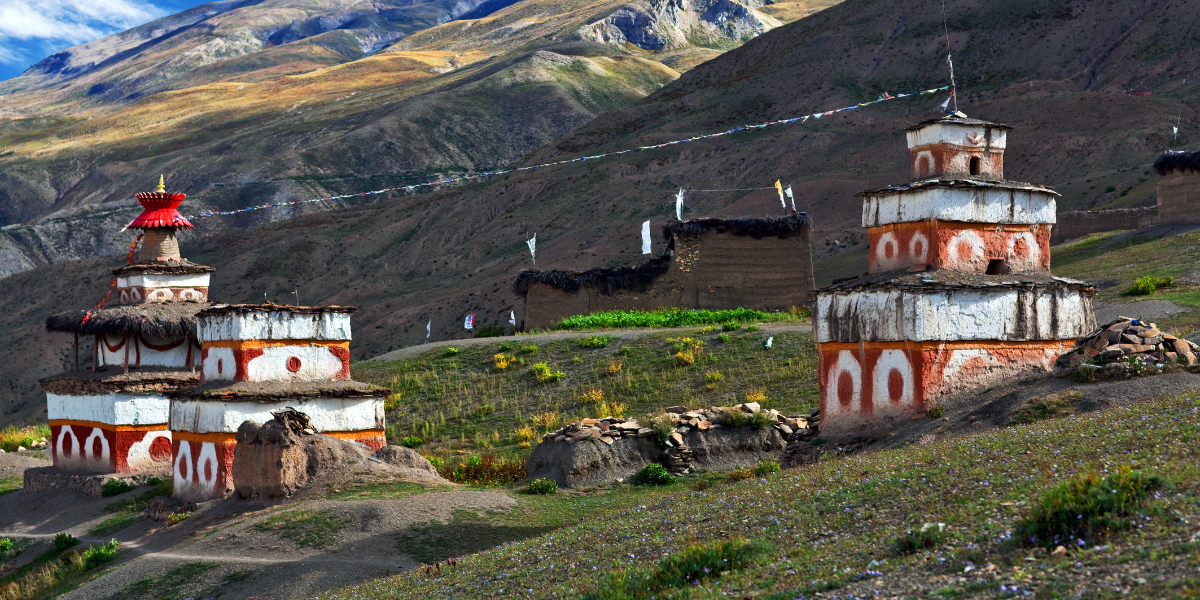
 Aakriti Baral
Aakriti Baral
